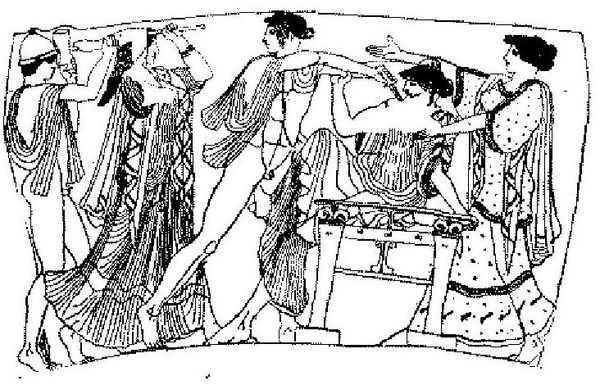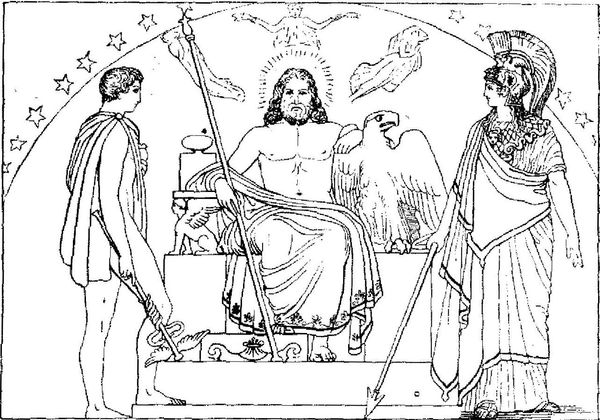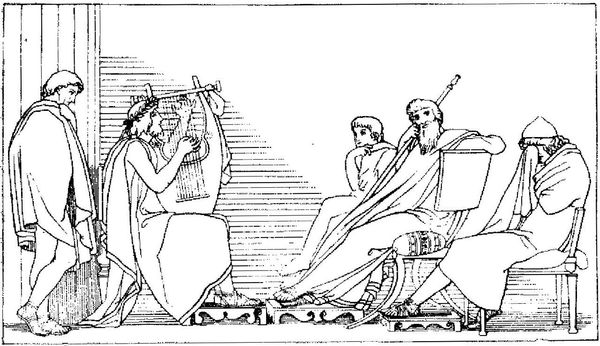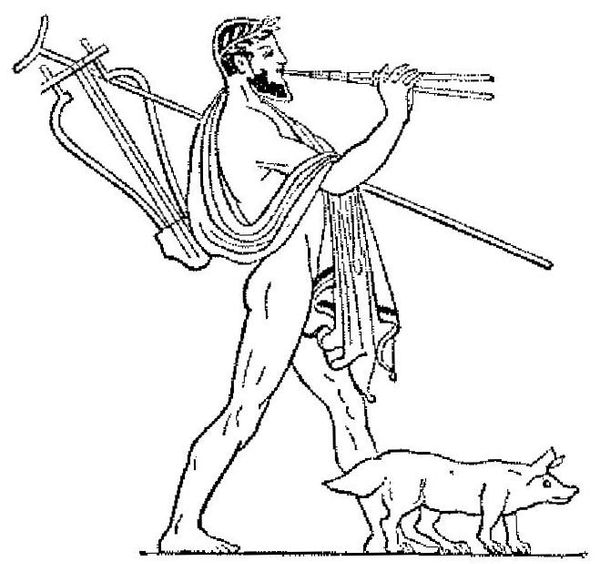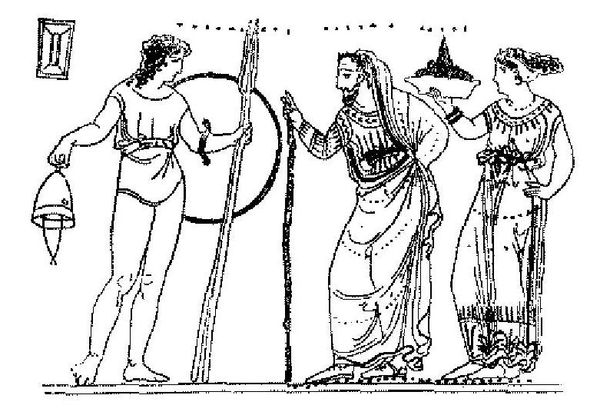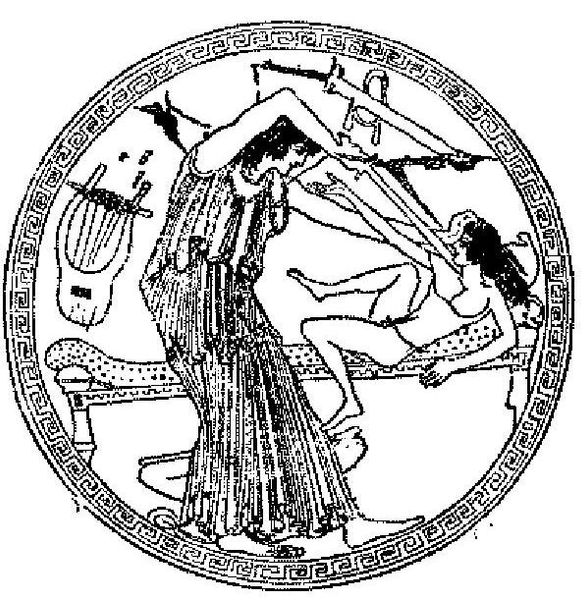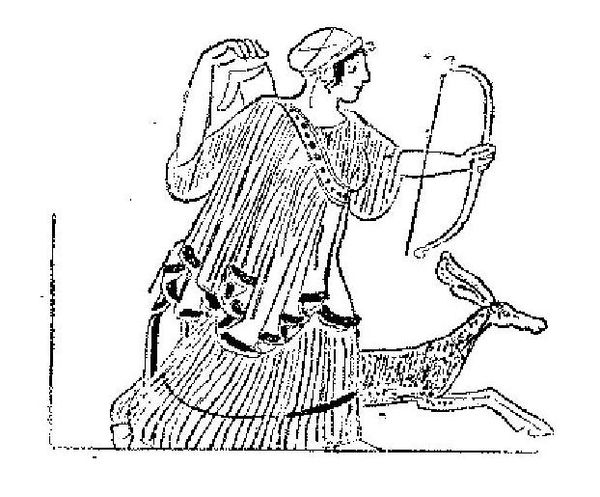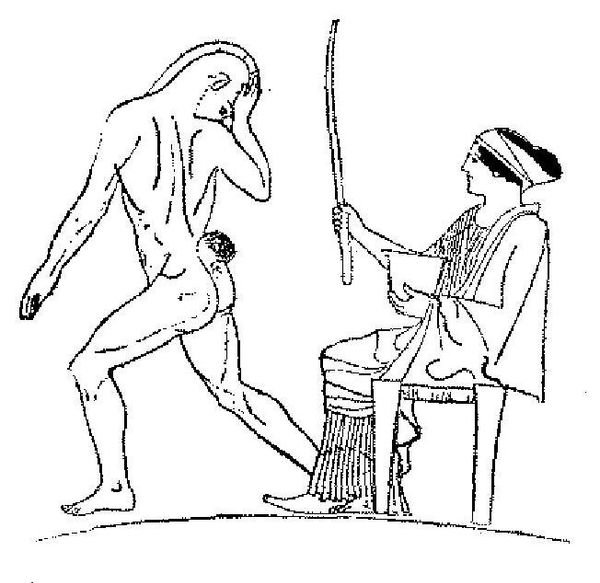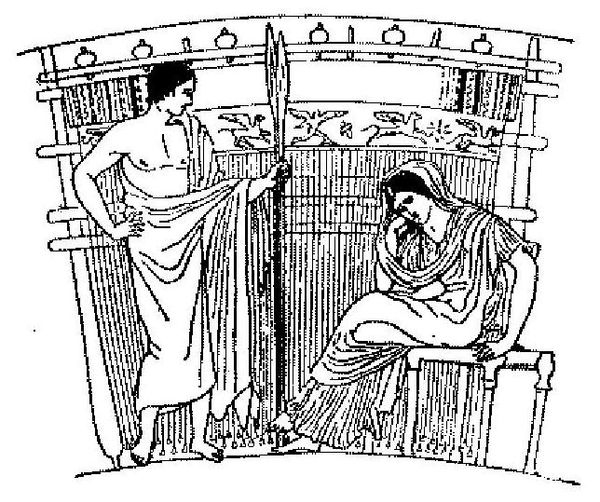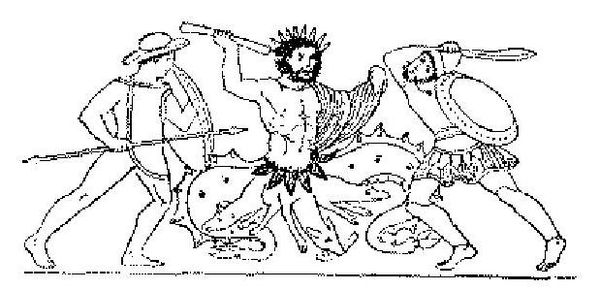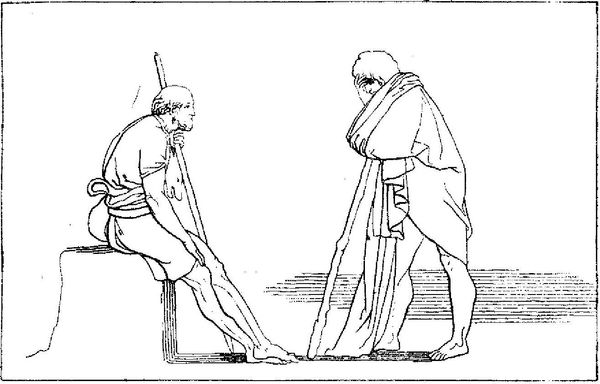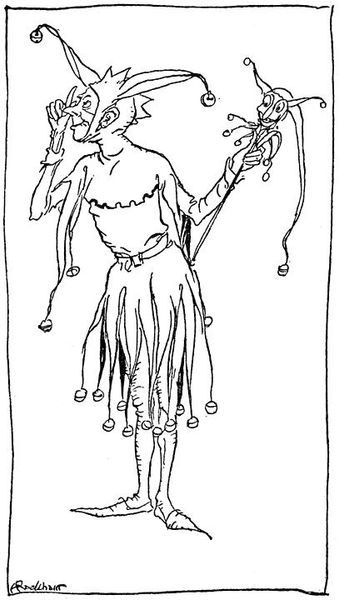
drawing, paper, ink
#
drawing
#
narrative-art
#
greek-and-roman-art
#
figuration
#
paper
#
ink
#
ancient-mediterranean
#
history-painting
Copyright: Public domain
Curator: Allow me to introduce John Flaxman's "Illustration to Odyssey" from 1793. Executed in ink on paper, it's a striking example of neoclassical linearity. What are your initial thoughts? Editor: It feels incredibly spare, almost minimalist in its starkness. The crisp black lines against the white paper create a powerful visual economy, hinting at grand themes with such deliberate austerity. Curator: Precisely. Flaxman's stylistic choices effectively channel the spirit of antiquity. Observe how the artist renders the figure with minimal modeling. Each line is deliberate, conveying form through contour rather than tonal variation. Consider the flowing drapery and its relationship to the body's underlying structure; the semiotic intention, in this context, alludes to simplicity in ancient art forms, specifically pottery. Editor: Thinking about materials, it's interesting that Flaxman chose ink, such a direct, unforgiving medium. There’s no room for second-guessing or layering; each stroke records the artist's hand and decision in real time, right? It makes you wonder about the accessibility of art making, particularly for creating commissioned pieces that would have circulated widely as engravings. Were these original drawings almost like a prototype for broader consumption? Curator: The drawing underscores how the artist conceptualizes the archetypal image of a woman from that specific era in the Odyssey. One can certainly trace the linear purity of Flaxman’s rendition back to its impact upon future illustrative interpretation. In its simplification, the viewer might sense the philosophical lineage, echoing back towards ideal forms—a legacy of neoclassicism. Editor: And that choice extends beyond aesthetics, too. The deliberate rendering almost fetishizes an aesthetic purity. It underscores the role and status of neoclassical artists like Flaxman during an era hungry for both romantic grandeur and classical austerity. These were objects that helped mediate that need. Curator: Indeed. Flaxman encapsulates not just a moment from Homer’s epic but reflects upon aesthetic ideologies pertinent to that era and beyond. His artwork highlights neoclassicism’s continuous re-imagining of antiquity as its cultural signifier. Editor: Thinking about the piece as a document of craft and artistic intent reframes how we read Flaxman and others who circulated work through these more "common" channels of distribution like illustration. I see it beyond merely illustrating the story; his choices create value both on the page and within that social context. Curator: A very astute and thoughtful material consideration of a deeply fascinating image.
Comments
No comments
Be the first to comment and join the conversation on the ultimate creative platform.
